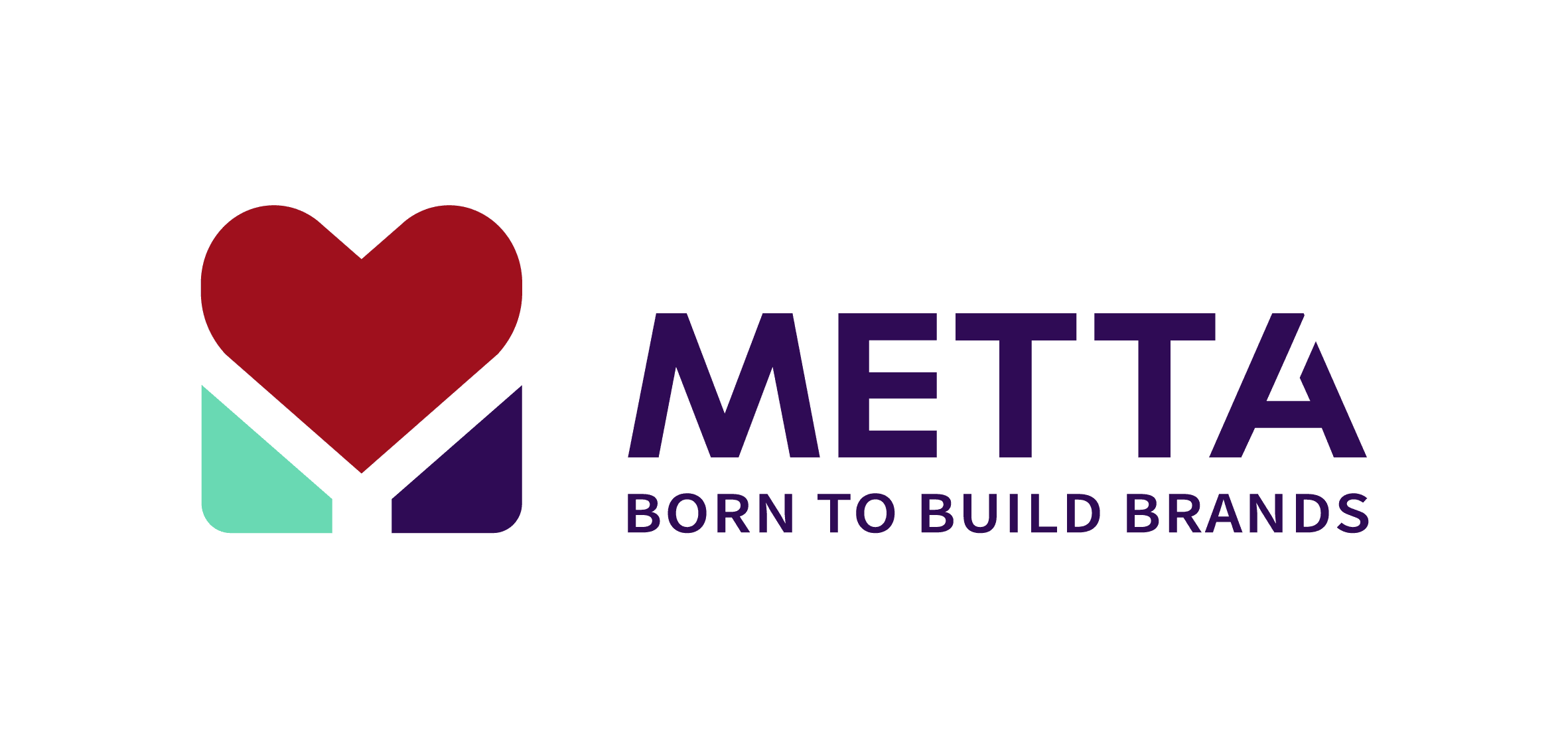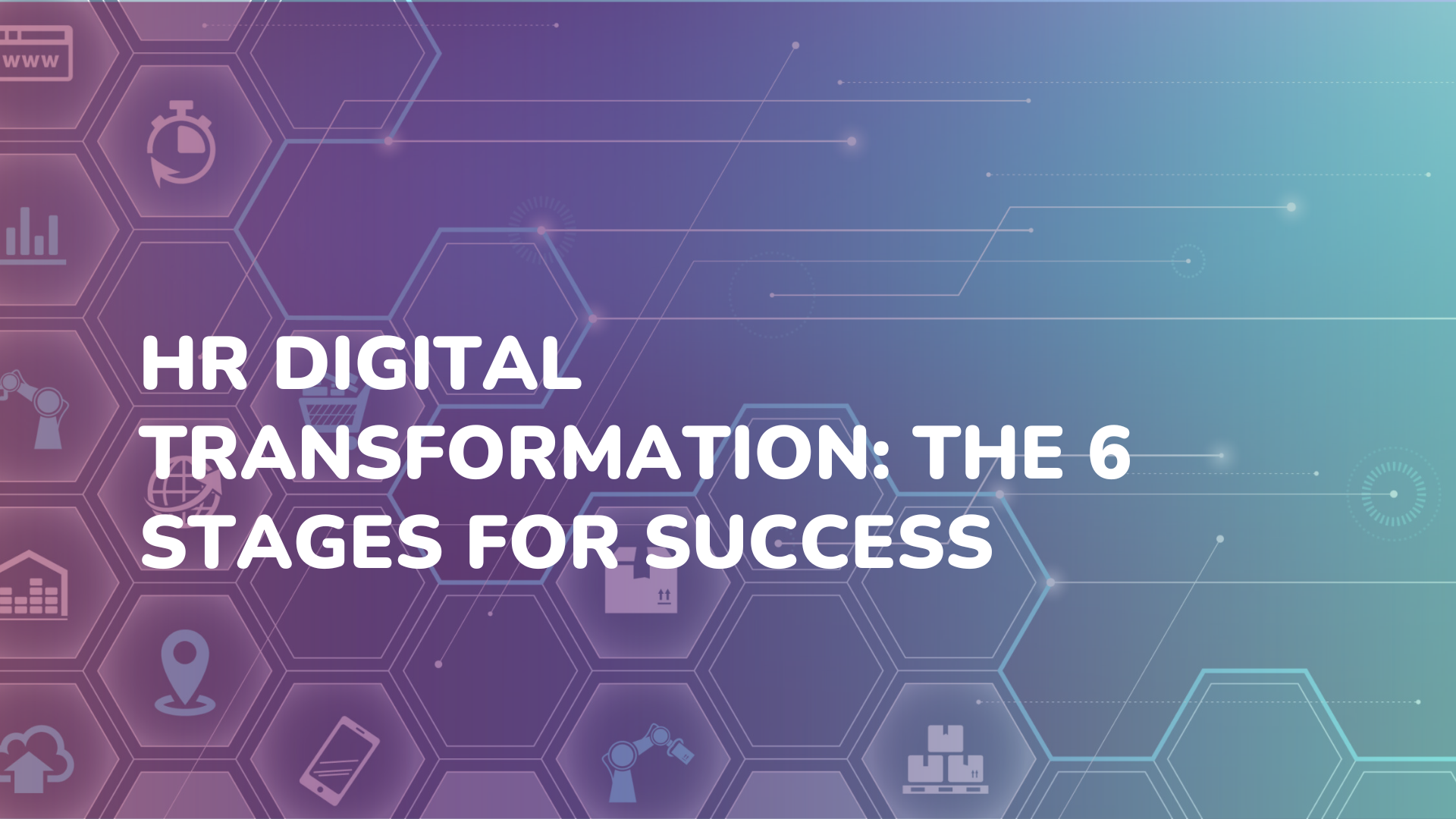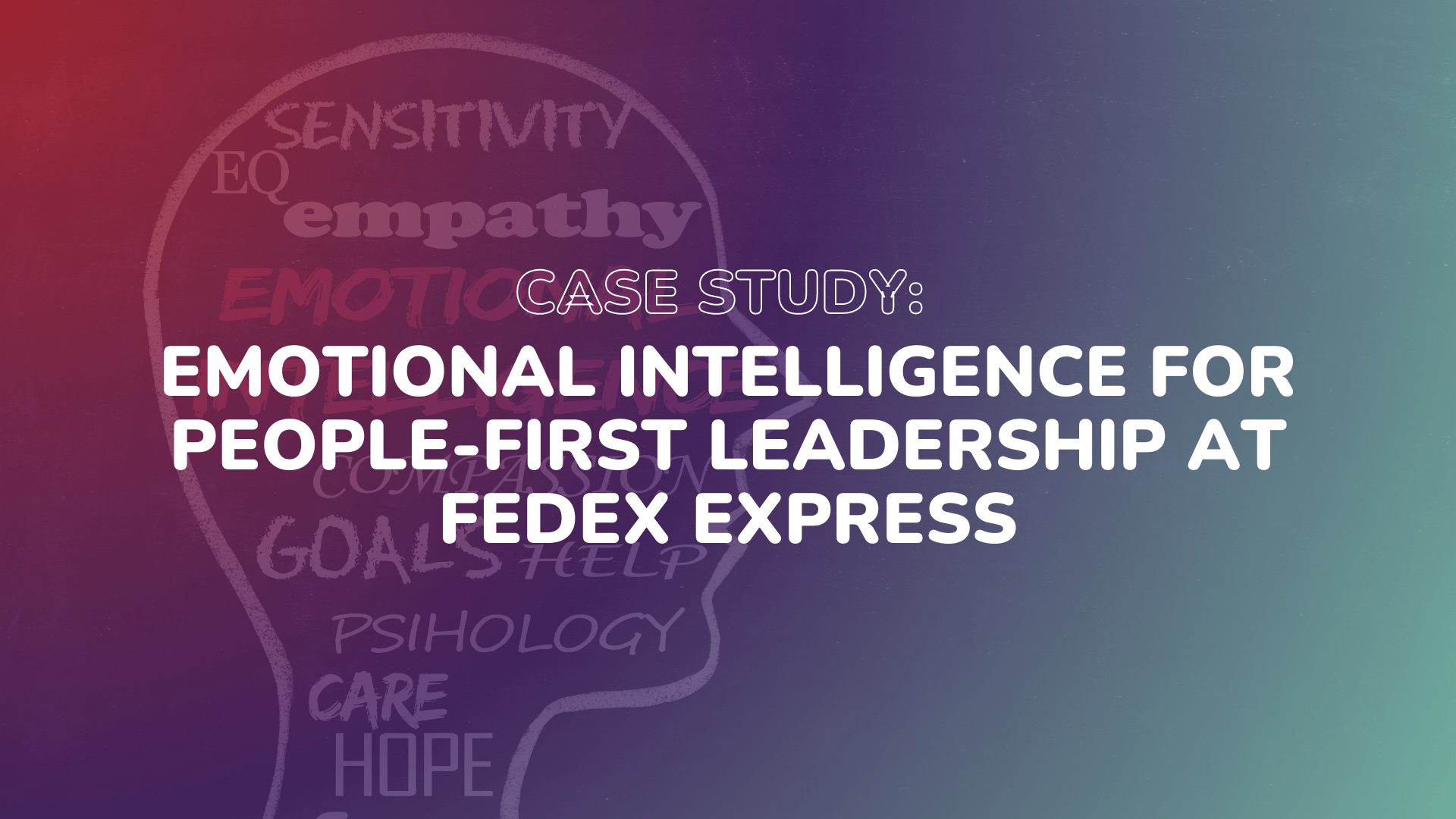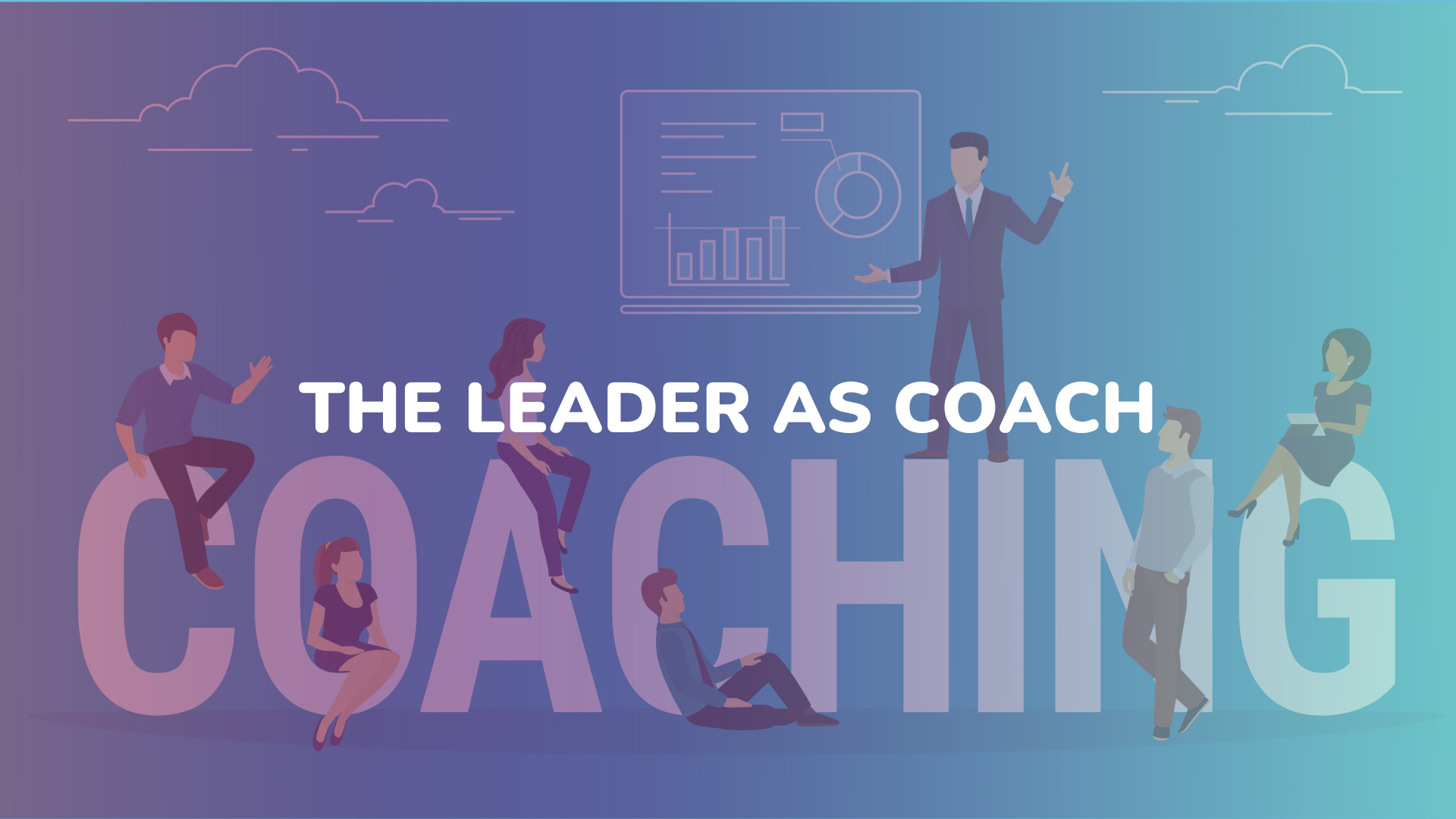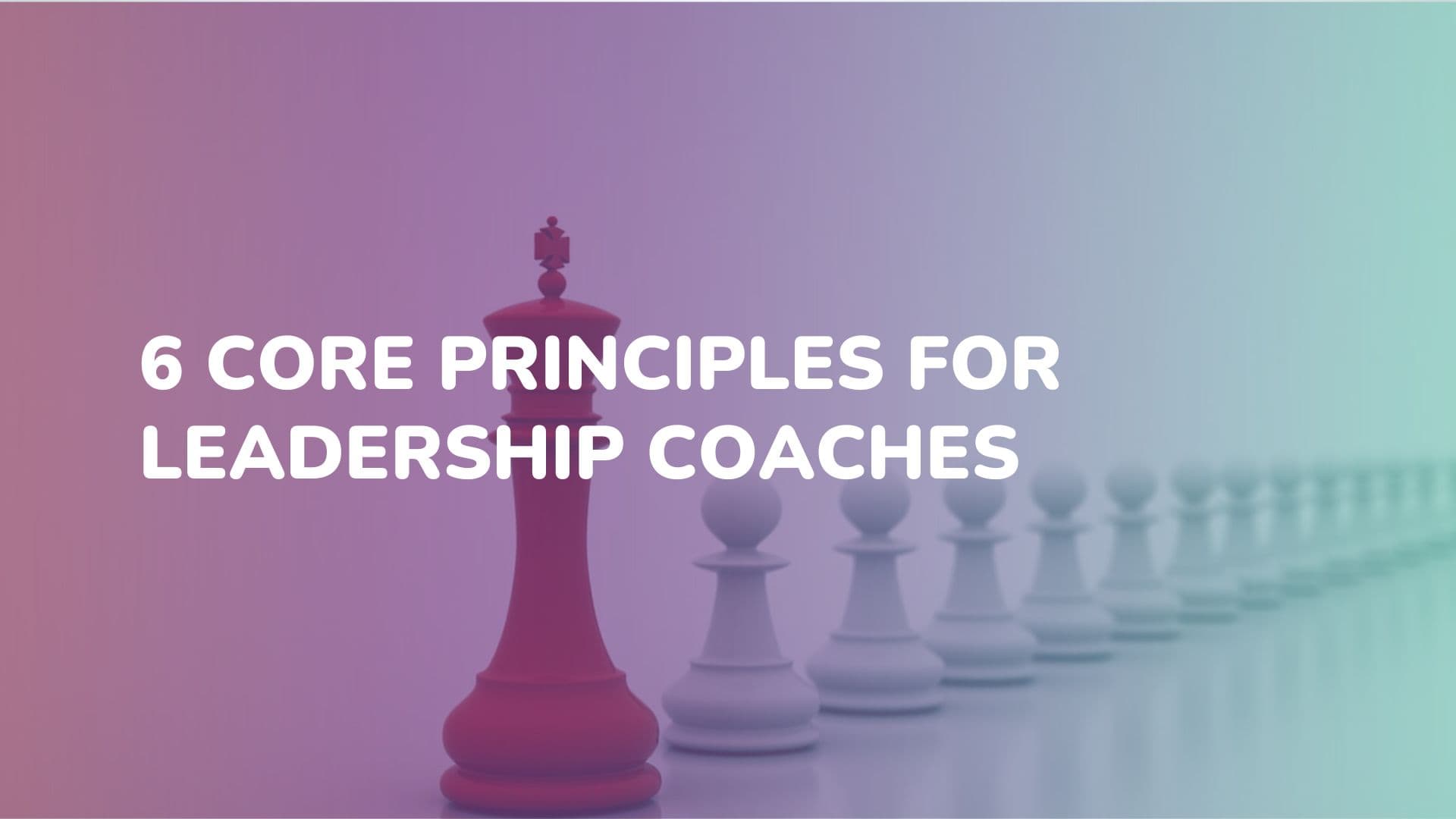HR Digital Transformation: The 6 Stages for Success
HR digital transformation is a hot topic for many HR professionals. And for good reason, since digital technology has the potential and ability to transform HR as we know it. But while it’s one thing to talk about digital HR transformation, it’s an entirely different thing to do it! In today’s article, we dive deeper into the phenomenon of HR digital transformation: what is it, why is it necessary and how do you go about it?
What is HR digital transformation
HR digital transformation is the process of changing operational HR processes to become automated and data-driven.
According to Deloitte’s 2017 Human Capital Trends report: ‘It’s about HR teams taking up the dual challenge of transforming HR operations on the one hand, and transforming the workforce and the way work is done on the other.’
So, rather than HR digital transformation being just about HR, it’s a metamorphosis that involves organizations as a whole. Or at least it should, in order for it to be successful.
I had a very interesting conversation about digital transformation with HR Tech leader Soumyasanto Sen at UNLEASH, watch the below video to hear his views on the topic.

The Why of HR Transformation
First things first. As a rule of thumb, any HR transformation, whether it is a digital one or not, has to take place with a clear objective in mind. It has to make business sense.
Too often still, companies seem to give in to peer pressure; their competitors all ‘do digital’ so they feel like they have to do something too. But digitalizing certain HR processes just for the sake of it is never a good idea. It leads to the implementation of (expensive) technology that doesn’t meet the actual needs of the business. Needless to say, this totally defies the purpose of a transformation.
Which factors are necessary for a successful digital transformation?
We asked our experts at UNLEASH London this question, here’s what they had to say:
Excerpt from an interview conducted by AIHR – Academy to Innovate HR with experts at the UNLEASH Conference & Expo London ExCeL 2018 on the question “What is necessary for a successful digital transformation?”
Peter Gold – in his role as a Talent Acquisition Thought Leader – shared: “When considering any digital transformation project, people should take into account the following important points. First, does this change bring benefits to me as a user? Because if it doesn’t solve any problems, for example, if it doesn’t make my life easier, help me save time, or reduce budget costs, then a user like me won’t use them. Second, as a business owner, what impact does this transformation process have on the business in terms of cost savings, revenue generation, or increasing employee satisfaction…? Finally, is the digital transformation truly engaging and inspiring for people? Will employees enthusiastically say, ‘I’ve used the new application, it’s really interesting and user-friendly, I really like it,’ or does this application have the potential to become ‘viral’ within the organization? You need to carefully consider these important points before making any decisions to implement a digital transformation project.”
Andy Spence, Strategic Workforce Advisor, shared: “I’ve been involved in 20 to 30 digital transformation programs in recent years. In my view, digital transformation of HR doesn’t only affect the HR department. We just need to think of them as workforce transformation activities and the potential to impact everyone in the business. The terms ‘digital transformation’ and ‘HR transformation’ can sometimes confuse people. Here’s what I’ve done: focusing on strategy, how we execute them, and how we manage people.”

Examples of HR digital transformation
There are countless examples of how HR is (slowly) transforming, we’ll give you a small sampling:
For example, Unilever is radically changing its hiring process. The company is experimenting with – among other things – social media, online games, and AI to further digitalize how they are recruiting.
Another example comes from Jeanne Meister, who talks about Cisco. The company organizes hackathons to build new HR products – such as the YouBelong@Cisco app and Ask Alex. The former is meant to help new hires and their managers during their onboarding period and the latter is a voice command app that gives quick answers to various HR questions about holiday policy, expenses etc.
IBM is well-known for its experiments to drive new digital HR solutions. The American technology firm launched – among many other things – a digital learning platform that gives its employees a fully customized experience.
The stages of HR transformation
Alright, onto the more serious part now. Starting with the various stages of a digital HR transformation. Because an organization doesn’t go from being barely digital to being fully digital overnight. These kinds of changes – true transformations actually – take time.
If you saw our must-read article we mentioned above, you may have come across an interview by Evgenia Bereziuk with Soumyasanto Sen. They spoke about HR digital transformation and Sen mentioned relevant research done by Brian Solis for Cognizant and Altimeter.
In his report for Altimeter, Solis distinguishes six stages of digital transformation:
- Business as usual – This one is pretty self-explanatory.
- Present and active – Various experiments throughout the organization drive digital literacy & creativity.
- Formalized – This is where the business relevance comes in. If it’s not relevant for the business, the leadership shouldn’t support it – although that’s not always the case, unfortunately.
- Strategic – Individuals realize the power of collaboration. Their shared efforts and insights lead to new strategic roadmaps.
- Converged – This is where a dedicated digital transformation team is formed to guide the company strategy and operations.
- Innovative and adaptive – Digital transformation has become the new ‘business as usual’ and a new ecosystem is established.
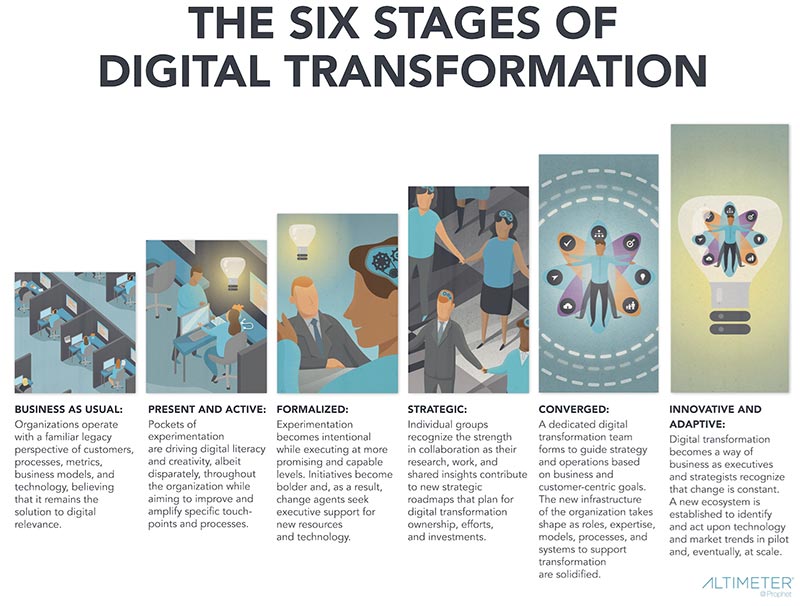
By the time we get to the sixth and final stage of a digital transformation, the mindset of the organization – or actually that of those who are in it – has shifted completely.
In what way you wonder? Let me explain.
You could say it has become a digital mindset. However, this entails more than people simply embracing various digital platforms and technology. It means that they’re aware – and accepting – of the fact that in our 21st-century world change is constant and that in order for a business to succeed it has to keep adapting to that change.
If by the way, you’d like to read Solis’ full report go here.
How to get started with HR digital transformation
While all of this sounds good in theory, it can seem pretty daunting when it comes to making that first step towards an HR digital transformation. So here are a few ingredients for a successful start:
- Establish a clear goal
- Get everyone on board
- Don’t overcomplicate things
- Prioritize ideas
- Assess performance
- Culture is important
Let’s go over them one by one.
1. Establish a clear goal
Again, before going off on a big transformational HR journey, first establish a clearly defined goal that makes sense from a business perspective. Most of the time, this goal will be to solve an issue employees encounter.
That’s why, in a process of HR transformation, the focus should always be on the employee as an end-user. It’s also why you want to let your employees test any new technology themselves first before you implement it.
2. Get everyone on board
This means all stakeholders, from employees to the C-suite and everyone in -between. When it comes to a digital HR transformation – something that will affect the entire organization – you need all the support you can get in order for it to become a success.
3. Don’t overcomplicate things
We’ve said this before – in our ‘What is Digital HR post’ – and it’s still true. Always start simple and small. Look at the areas of your HR processes that could do with a digital makeover (preselection & recruitment, onboarding & inboarding, learning and development, payroll management and so on). Talk about this with your employees and the members of the C-suite. Ask them what they think should be a priority.
4. Prioritize ideas
This will undoubtedly result in a long list of ideas. Prioritize them based on impact and effort. The former meaning the business impact of digitalizing the ideas and the latter meaning the time and money it would take to actually get the ideas to go digital.
Start with the ideas that are high impact and low effort. They will help you build the business case for digital HR and get you going quickly.
5. Assess performance
Trying and implementing digital technologies is great, but doesn’t make much business sense if we don’t look at their results. Hence we need to critically assess what works and what doesn’t.
After all, the only way for us to advance is to solve actual problems with technological solutions that truly solve these problems.
6. Culture is important
Digital technology alone is not enough for an HR transformation. Let alone a digital transformation of an entire organization. It’s just as much – perhaps even more – about the mindset of everyone involved. And that has everything to do with your company culture.
From the new people you hire, via your current workforce all the way up to the C-level, a digital mindset – in the broadest sense of the word – is essential for a successful transformation.
On a final note
Not to finish on a heavy note, but whether you like it or not, an HR digital transformation isn’t optional. In a world that’s digitalizing at a fast pace, with consumer-slash-employees that don’t know any better than for virtually anything in their lives to be digital, HR and employers simply can’t stay behind.
Look at what the people from the Timken Company did for example. They decided to move their HR operations on a cloud-based HR solution to support various processes. Think of – among others – recruiting, payroll and succession planning.
As a result, the company benefitted from a reduced time to pull operational reports, an easier access to business intelligence and an improved employee engagement as well as satisfaction. Not a bad digital HR transformation score, right?
Let us know your opinion and comment section via email phung.metta@metta.com.vn so we can support and help your business. Metta with solutions to support human resources will help you and your employees make positive changes and find happiness in work and life.
Source: https://www.aihr.com/blog/guide-hr-digital-transformation-hr-transformation/
Metta Marketing
Top brand strategy consultant
